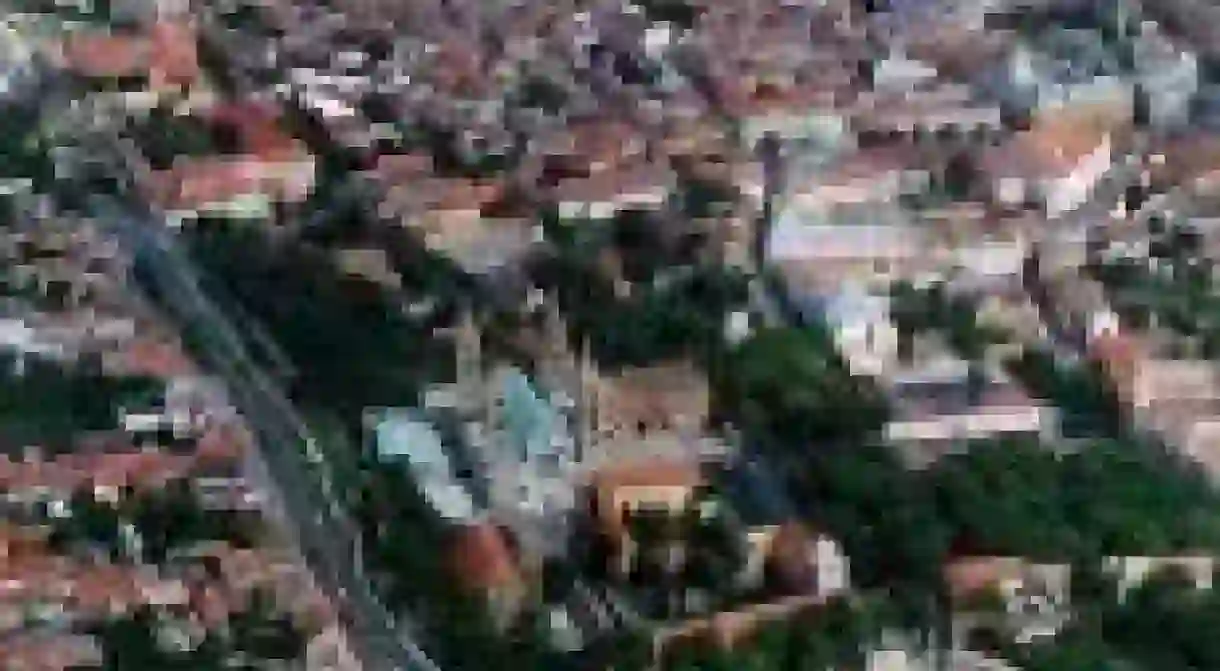The Best Art Galleries And Museums In Pécs, Hungary

Pécs, known as “the borderless city,” boasts 2,000 years of Hungarian history. Declared a UNESCO World Heritage Site in 2000 and the European Capital of Culture in 2010, it’s no surprise that the city is home to a vivacious cultural scene, complete with some must-visit exhibition spaces.

Gallery of Modern Hungarian Art
Set in a Baroque-style country house, the Gallery of Modern Hungarian Art is home to over 12,000 masterpieces from the 20th century’s Hungarian modern art movements. Representing an outstanding collection from the modern, postmodern, avant-garde and neo-avant-garde era, with internationally acclaimed names as Rippl-Rónia, Tihanyi or Gulácsy, the museum is justly among the top modern galleries not only in Pécs, but also countrywide. The permanent collection marks over 50 years in Hungarian art in chronological order; however, visitors are welcomed to wander freely.

Csontváry Museum
The Csontváry Museum is exclusively dedicated to one of the most significant Hungarian avant-garde artists, Tivadar Csontváry-Kosztka (1853-1919). The museum is set in a neo-Renaissance building, which, besides the Hungarian National Gallery in Budapest, holds the greatest selection from Csontváry’s works. Csontváry worked as expatriate artist and put on successful exhibitions in Paris and other European cities. The museum, which opened in 1973, represents the artist’s exceptional collection of works from different creative periods; starting with his early etchings through to turn of the century paintings, including the iconic and outwardly metaphoric self-portrait The Solitary Cedar. Csontváry, who originally graduated as a pharmacist, was confidently painting landscapes, biblical and historical themes in his unique style.
Csontváry Museum, Káptalan u. 5., Pécs, Hungary, +36 72 514 040

Vasarely Museum
Victor Vasarely’s works are recognized internationally, but his origins aren’t so well known. He was born in Pécs in 1905 and left for France in the 1930s, where he stayed until his death in 1997. The Vasarely Museum came to life when the artist left 42 silk-screened works to his hometown, by which a permanent collection of his work was built starting in 1976. The collection has continued to expand, including acquired works by Mirelett, Hans Arp, Uecker, Schöffer, as well as creations made by Vasarely’s wife (Klára Spinner) and son (Jean-Pierre Vasarely). Vasarely was a groundbreaking op-art artist, who was inspired by analytical-geometrics and versatile structural concepts, from which he pioneered his unique art style. One of his most iconic creations, The Zebra (1930) is also displayed at the Vasarely Museum.
Vasarely Museum, Káptalan u. 5., Pécs, Hungary, +36 72 514 040

Ferenc Martyn Museum
The Ferenc Martyn Museum is dedicated to Ferenc Martyn, a leading figure of the Hungarian non-figurative art movement. After serving in the army during World War II and traveling across Europe, Martyn moved back to Pécs, where he worked until his death in 1986. The versatile artist left exceptional paintings, graphics and sketches behind, alongside his distinctive sculptures. He was celebrated during his lifetime, earning the highest Hungarian honors. The museum was reopened in 2011.
Ferenc Martyn Museum, Káptalan u. 5., Pécs, Hungary, +36 72 514 040

Erzsébet Schaár Museum
The Erzsébet Schaár Museum is modern to its core. The museum was designed by István Janáky in a postmodern style, and displays the last immense work of the prominent artist, Erzsébet Schaár (1908-1975). The original works were exhibited in Lucerne in 1975, and carefully reconstructed in Pécs in 1991. The exhibition entitled The Street literally represents a path, which could be seen as independent sections or as one coherent whole. The artist elaborates the space-person, space-time relationship, where portraits of well-known Hungarian artists hang alongside the symbolic objects such as chairs and mirrors.
Erzsébet Schaár Museum, Káptalan u. 5., Pécs, Hungary, +36 72 514040

Pécsi Gallery
Art Gallery

M21 Gallery
Nick Art & Design
Nick Art & Design is located in the city center, set in a stylishly renovated historical building. The venue is home to exhibition and workroom sites. Established in 2010, Nick Art & Design showcases monthly solo and joint exhibitions from the works of recognized local and international artists. The gallery’s vision was to sustain the cultural atmosphere achieved during the year that Pécs was voted the “European Capital of Culture,” and to serve as an experimental artistic hub for local emerging artists. Thanks to its varying exhibitions, accessible location and exciting cultural events, the gallery clearly achieved its mission, and by 2014 it became Pécs’s internationally acclaimed contemporary art spot.
Nick Art & Design, Király u.1. Pécs, Hungary, T: +36 30 230 2444














